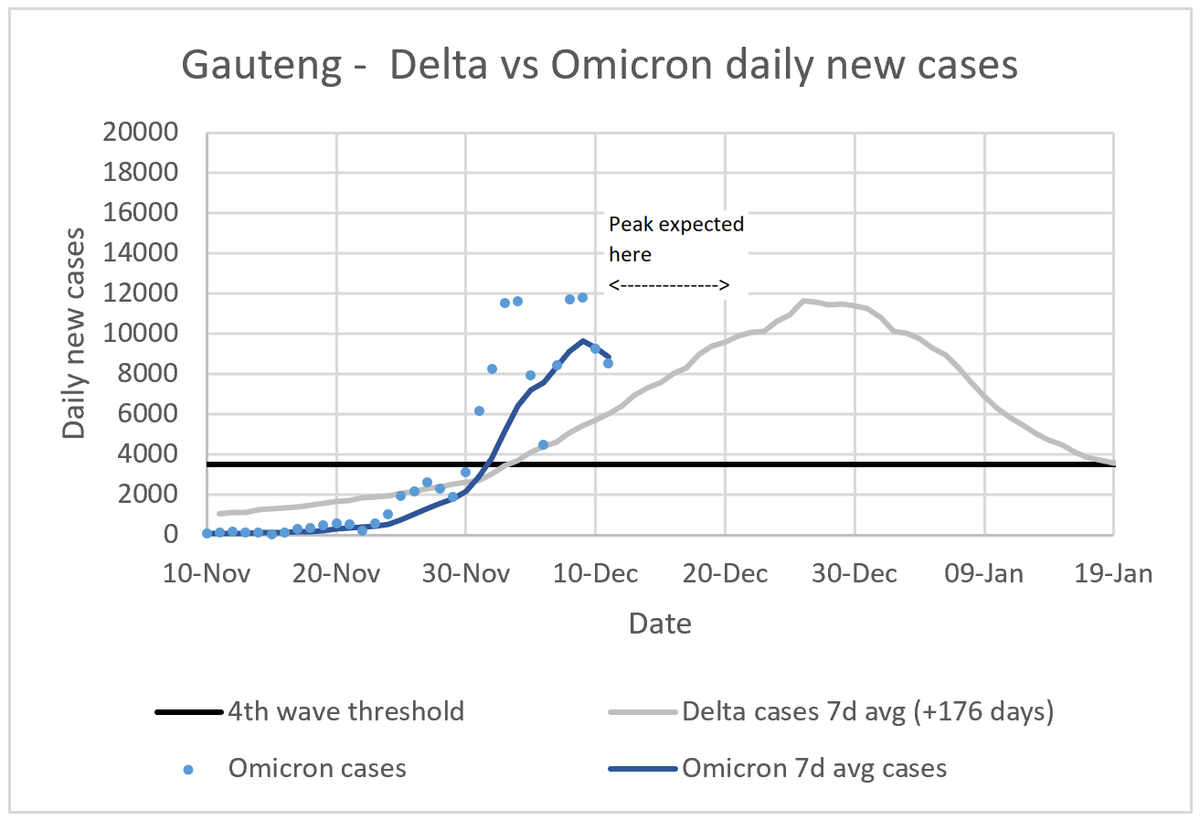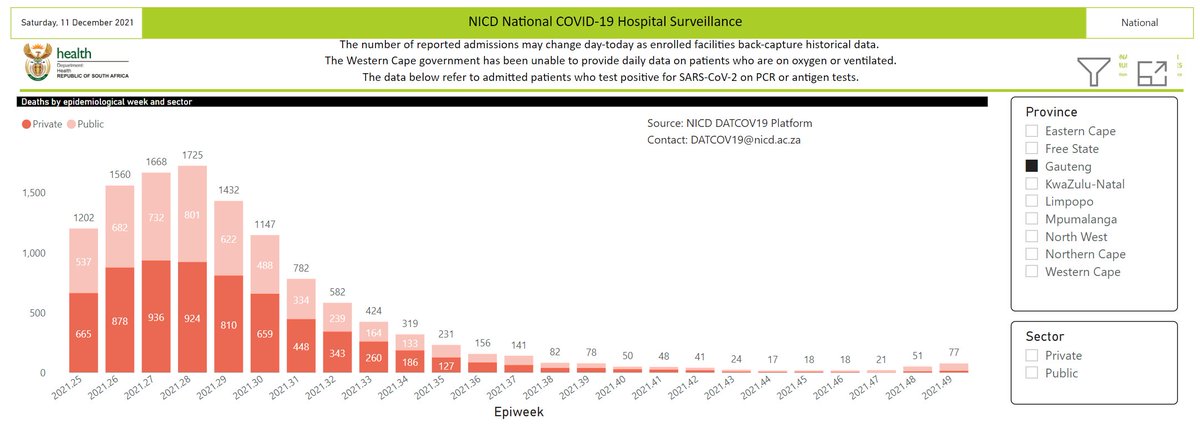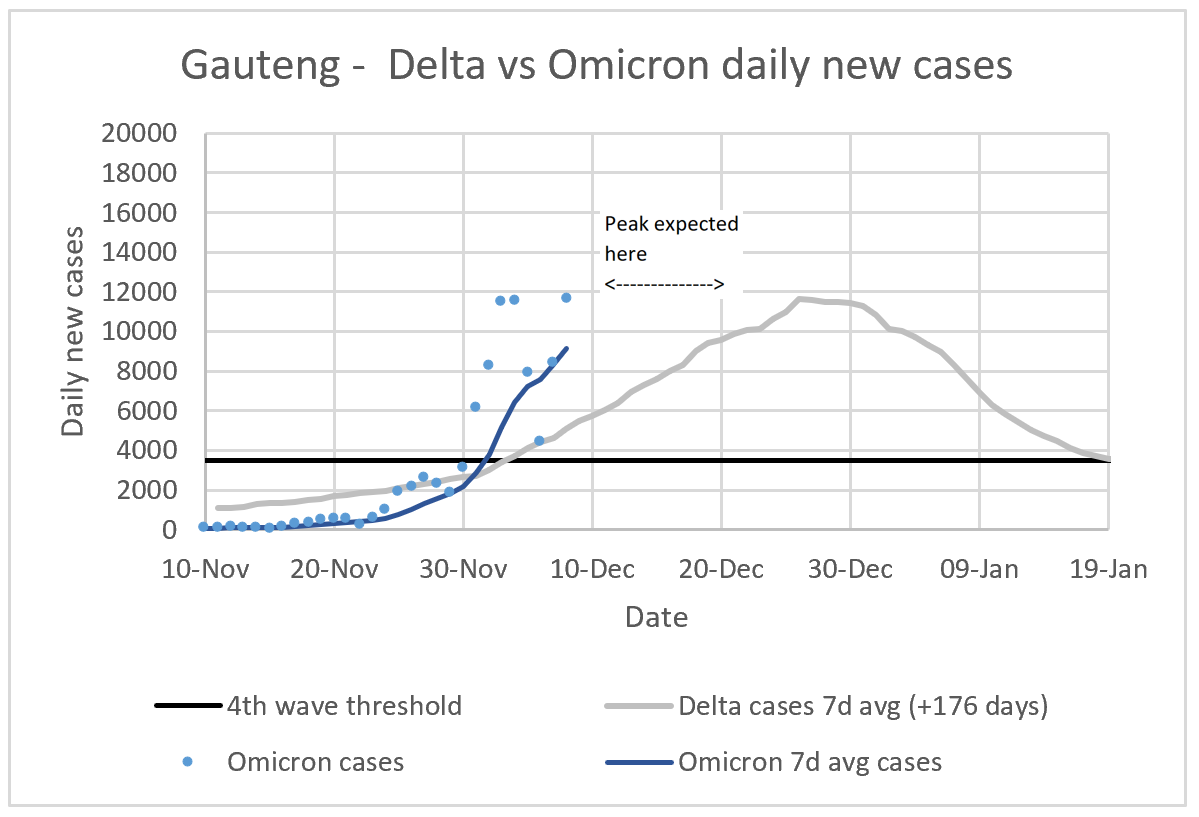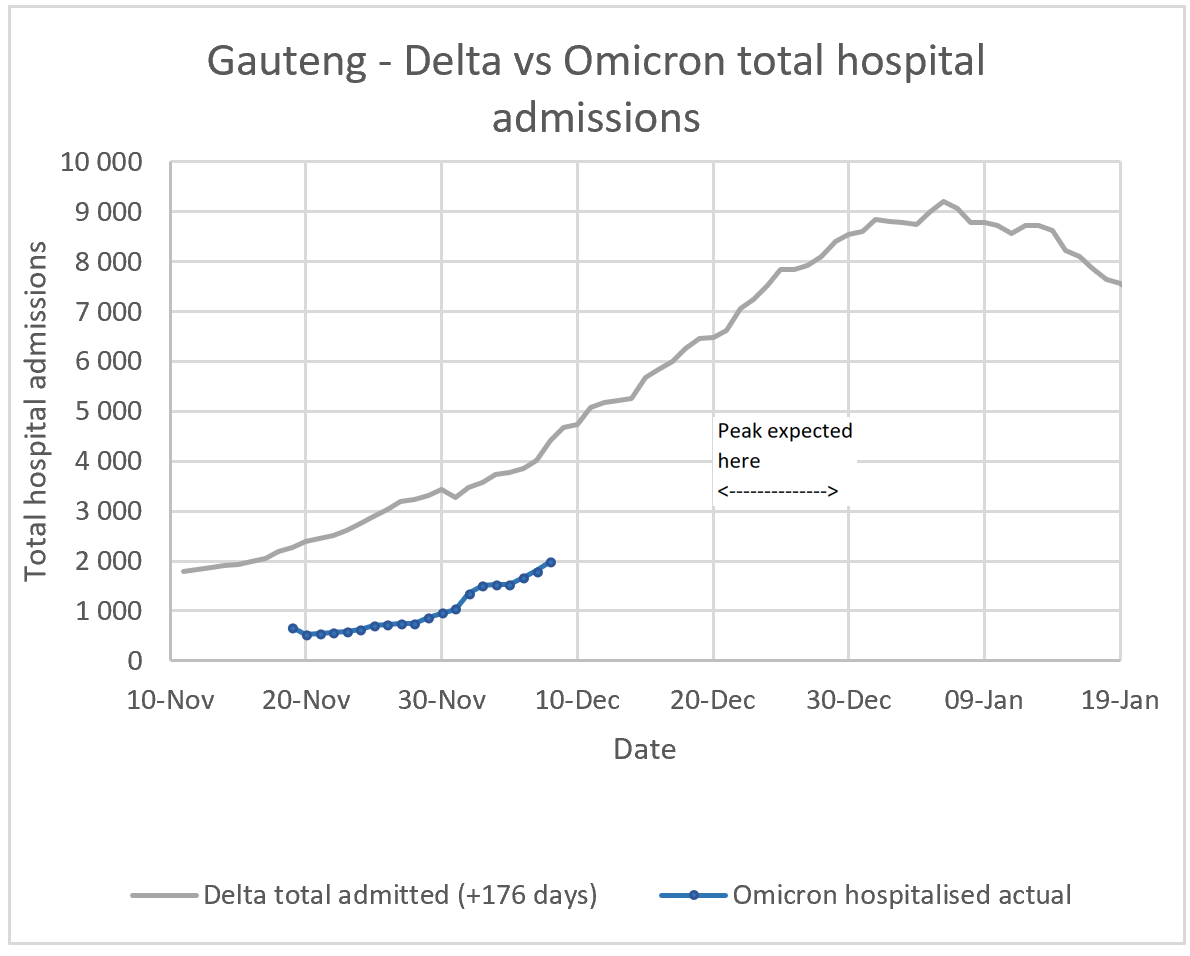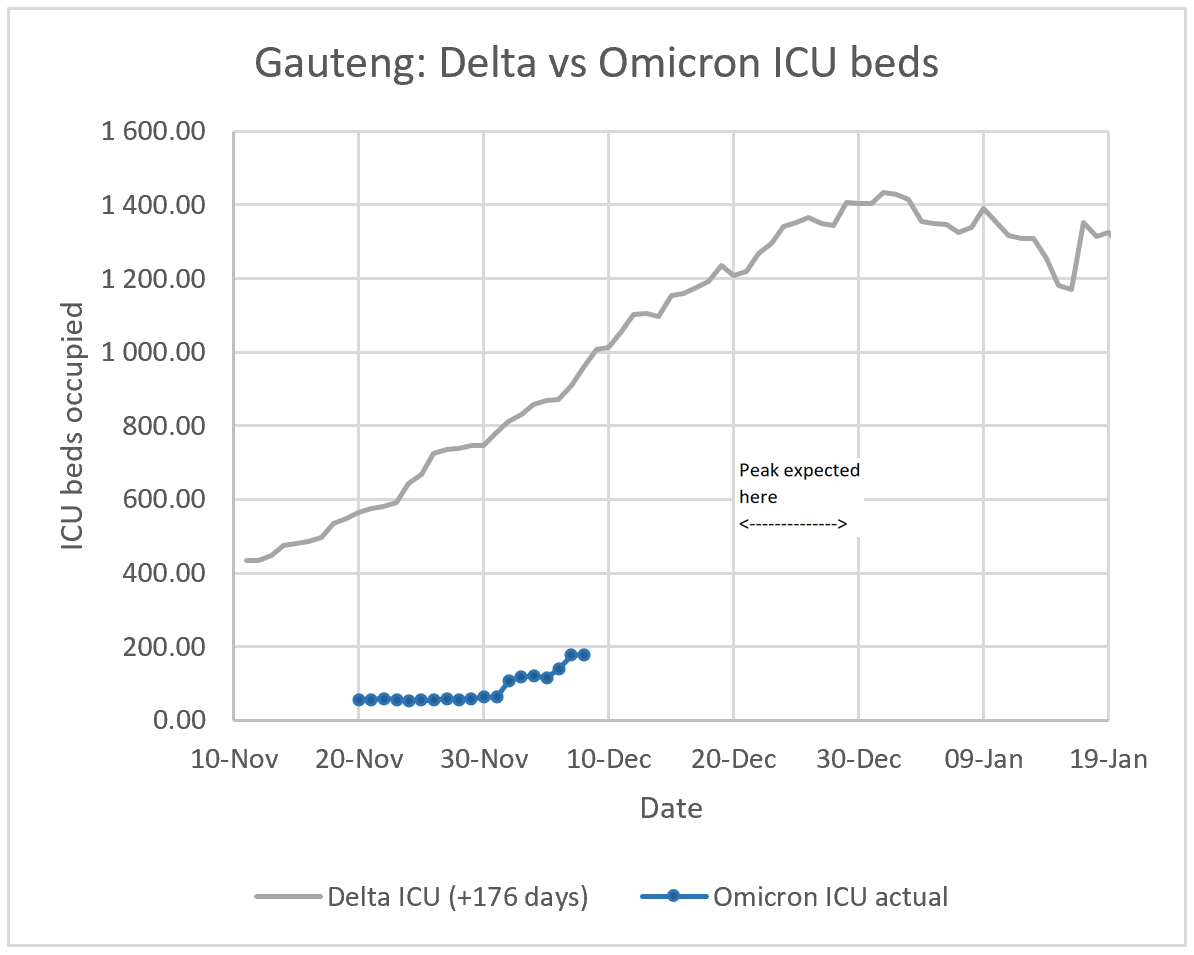
1 of 10:
Should the rest of the world fear #Omicron?
South Africa is experiencing a very mild wave with #Omicron. The hospitals are easily coping even though case levels in Gauteng will exceed Delta levels. South Africa currently only has light restrictions.
Should the rest of the world fear #Omicron?
South Africa is experiencing a very mild wave with #Omicron. The hospitals are easily coping even though case levels in Gauteng will exceed Delta levels. South Africa currently only has light restrictions.
2 of 10:
Despite light restrictions it is expected that only 15-25% of the country will be infected with #Omicron.
The South African context is unique. 70% of the population have had Covid-19 already. Only 50% of the adult population is fully vaccinated.
Despite light restrictions it is expected that only 15-25% of the country will be infected with #Omicron.
The South African context is unique. 70% of the population have had Covid-19 already. Only 50% of the adult population is fully vaccinated.
3 of 10:
Scenario 1: #Omicron escapes vaccine and natural immunity to a significant extent.
In this scenario, everyone in South Africa would have been vulnerable to Omicron, so the low deaths could then only be ascribed to a significantly lower virulence of the Omicron itself.
Scenario 1: #Omicron escapes vaccine and natural immunity to a significant extent.
In this scenario, everyone in South Africa would have been vulnerable to Omicron, so the low deaths could then only be ascribed to a significantly lower virulence of the Omicron itself.
4 of 10:
In scenario 1, the rest of the world would have nothing to fear as the virus is extremely mild.
-----
Scenario 2:
#Omicron does not escape vaccine or natural immunity to any significant extent.
In scenario 1, the rest of the world would have nothing to fear as the virus is extremely mild.
-----
Scenario 2:
#Omicron does not escape vaccine or natural immunity to any significant extent.
5 of 10:
In this scenario, the mild wave and low deaths can be ascribed to natural immunity and vaccine induced immunity. Omicron might be of similar virulence to Delta, but since so few uninfected and unvaccinated people remain, deaths are very low.
In this scenario, the mild wave and low deaths can be ascribed to natural immunity and vaccine induced immunity. Omicron might be of similar virulence to Delta, but since so few uninfected and unvaccinated people remain, deaths are very low.
6 of 10:
In this scenario, all countries with high vaccination rates have nothing to fear, and will have similar mild waves with low deaths.
In this scenario, all countries with high vaccination rates have nothing to fear, and will have similar mild waves with low deaths.
7 of 10:
Scenario 3:
Omicron escapes vaccine induced immunity, but natural immunity continues to provide excellent protection.
In this scenario, the mild wave and low deaths in South Africa is exclusively the result of high natural immunity levels.
Scenario 3:
Omicron escapes vaccine induced immunity, but natural immunity continues to provide excellent protection.
In this scenario, the mild wave and low deaths in South Africa is exclusively the result of high natural immunity levels.
8 of 10:
Omicron might be of similar virulence to Delta. Countries with high vaccination levels but low natural immunity levels could then still have high case levels and high death levels.
Omicron might be of similar virulence to Delta. Countries with high vaccination levels but low natural immunity levels could then still have high case levels and high death levels.
9 of 10:
In this scenario, countries would have to bite the bullet and get through the pandemic. Additional vaccine doses and coercive mandates will not help.
In this scenario, countries would have to bite the bullet and get through the pandemic. Additional vaccine doses and coercive mandates will not help.
10 of 10:
In scenarios 1 and 2 the rest of the world has nothing to fear.
The only scenario that could make things worse for the rest of the world is scenario 3 where the vaccines do not protect against severe disease, but natural immunity does.
In scenarios 1 and 2 the rest of the world has nothing to fear.
The only scenario that could make things worse for the rest of the world is scenario 3 where the vaccines do not protect against severe disease, but natural immunity does.
• • •
Missing some Tweet in this thread? You can try to
force a refresh


